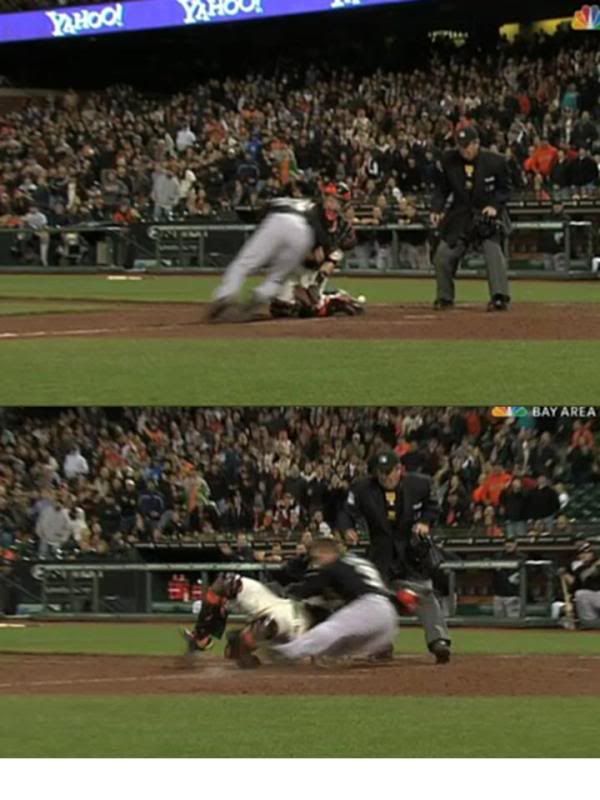quote:
But if you watch that video and stop it before the actual play, you'd say "he's gotta run him over to score" if you use the logic people have used with Cousins.
Bulldog,
Once a runner makes a decision, it shouldn't change. Indecision can cause serious injury to the runner. The decision to slide and type of slide, at any base and path, needs to be made as early as possible. Same goes for a collision or simply standing up. Changing your mind at the last second is a mistake.
The runner trying to score is relying on his view of the play, the teammate telling him what to do at the plate, and mostly on his instincts. There is no time for logic, the goal is to score.
If they want to stop collisions, they need to change the rules. Then the collision is not one of the decisions.
It's easy for everyone to watch a replay in stop action or slo-motion and form an opinion or compare plays. As we all know, the runner does not have that luxury and people do make mistakes at times. The mentality is to score the run, do whatever it takes within the rules. Without a rule change it will happen again.
BTW, If there were a rule against running over the catcher, that great slide wouldn't have worked. It was the catcher expecting the collision that froze him and allowed the slide to work.


